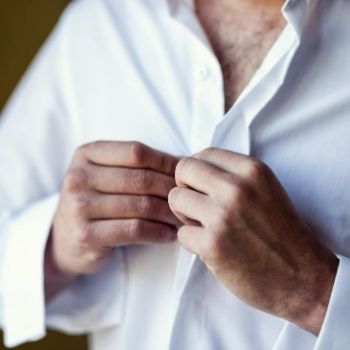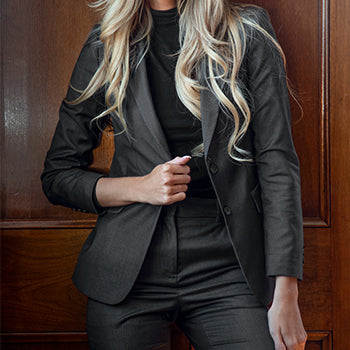Baby, It’s Cold Outside: How To Select A Quality Overcoat
 There’s a chill in the air and frost on the ground. It’s time to start wearing a coat, and unless you’re planning on spending the whole winter camping in the forest, it’s time to upgrade from your sporty fleece to a stylish overcoat. So, how do you pick the best one?
There’s a chill in the air and frost on the ground. It’s time to start wearing a coat, and unless you’re planning on spending the whole winter camping in the forest, it’s time to upgrade from your sporty fleece to a stylish overcoat. So, how do you pick the best one?When you first go about selecting a coat, knowing the vernacular will save you a lot of time and a lot of hassle. While all of these jackets are considered to be dressier, there is a difference. A traditional overcoat will get you the most mileage, and but here’s the breakdown for you:
- Overcoat: An overcoat is usually a bit longer in length, is worn in cold weather and can skew casual or dressier, depending on styling.
- Topcoat: A topcoat is more lightweight and can be worn during temperate weather, or as a rain jacket.
- Greatcoat: A greatcoat is a heavier overcoat that usually takes its look and styling from military history.
The first and most obvious feature of the traditional overcoat is the length, usually ranging from knee-length (either slightly above or below the knee), to ankle length. Today’s modern man tends to favor the knee-length styles, cut closer to the body which compliments a trimer frame, and many on-the-go men find this length to be more convenient. A full-length overcoat will give off the err of a sophisticated gentleman, they compliment a wide variety of figures, as well as keeping you slightly warmer. Gentleman over the age of 50 tend to select these longer styles.
After you’ve established the right length for you, there are a few other qualities to consider:
- Sleeves & Shoulders: The length of your sleeves should reach a little past your cuff when you’re wearing more formal attire. For an even more formal look, pair with a great set of leather gloves. Your shoulders should fit squarely and should have enough room to accommodate your bulkiest layer, while not losing its shape with more minimal clothing.
- Collar: Your coat’s collar should always be able to cover the collar of your suit jacket. It should fit smoothly around the neck, with no gaps and hang so your suit lapels are not visible.
- Styles: If you can only buy one overcoat, go for a single-breasted style, as you can dress it up or down. (Popular styles include the Chesterfield and the Covert.) A double-breasted with peak lapels will show a bit more formal and will wear warmer than a single-breasted style. (Popular double-breasted styles include the Peacoat, and the Paletot.)
- Fabric: Wool. Wool. Wool. If you want a quality coat that will last you for years, it should be made of wool, weighing no less than 4 pounds. If you’re looking for something a bit softer, a cashmere jacket will be warm, but will wear quicker with average use. If you need a little bit more softness to your jacket, a nice wool/cashmere blend (no more than 10%) will keep well.
- Color: Because you wear your overcoat with just about everything, it’s best to keep it as neutral of a color as you can. You can never go wrong with a charcoal grey or navy, while black is always in style. More recently, Camel has come into fashion and will show a sophisticated, yet dressed down look for winter.
A little tip when purchasing your next overcoat: Bring along a shirt and a sport coat or suit jacket to make sure your jacket fits nicely over top.
Looking for a great overcoat at an affordable price? Karako Suits is here to help keep you warm.
















































